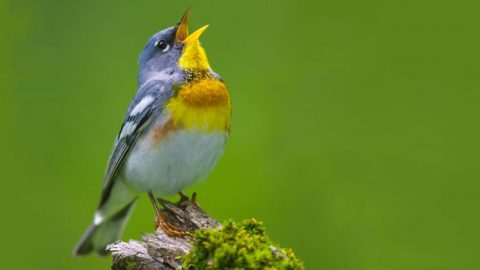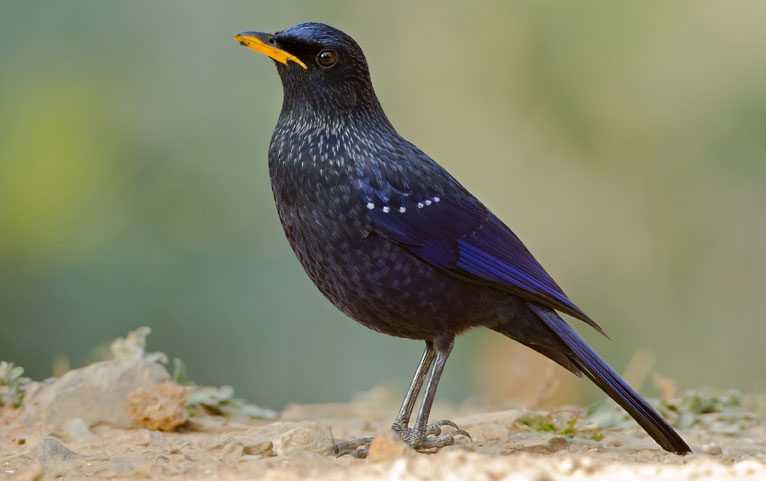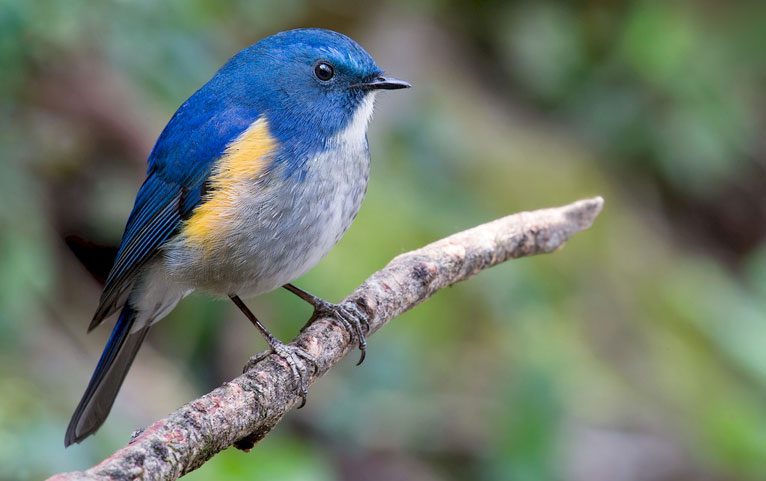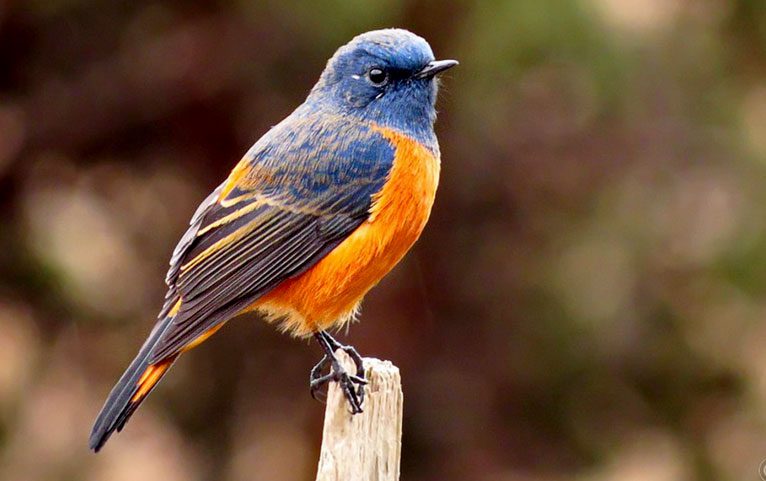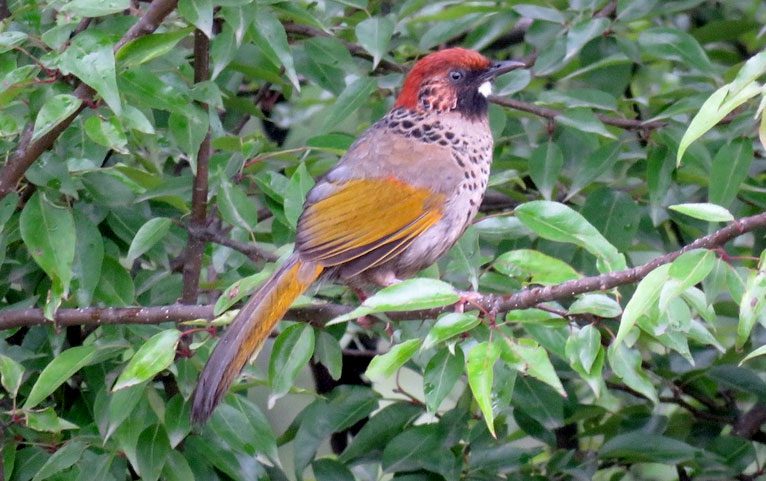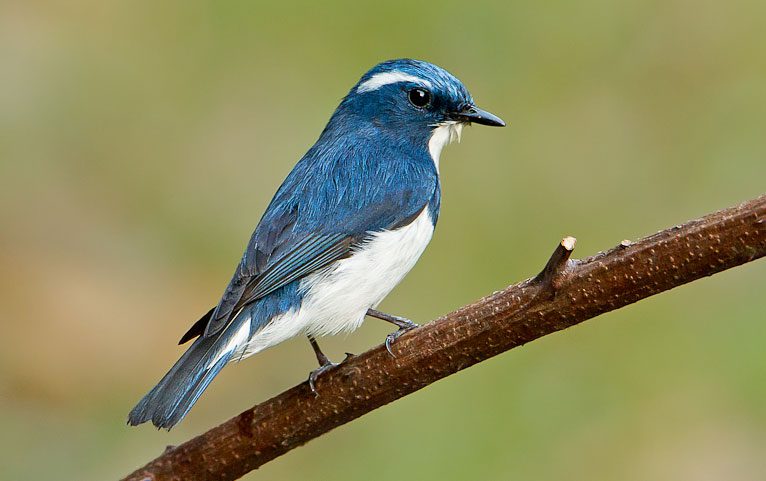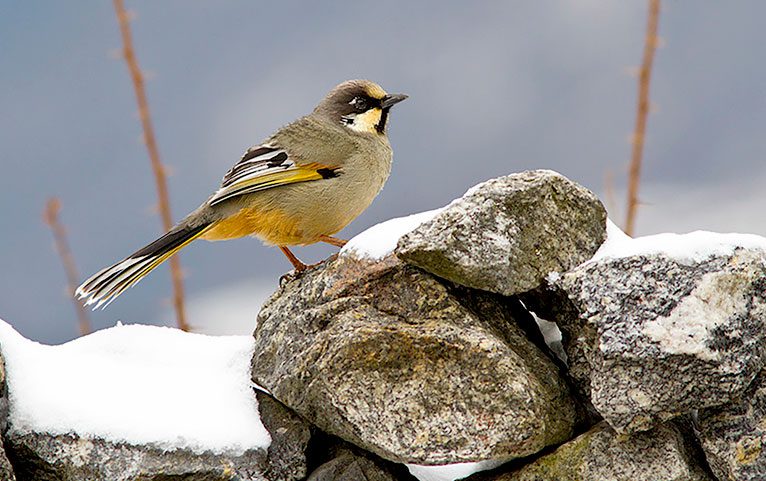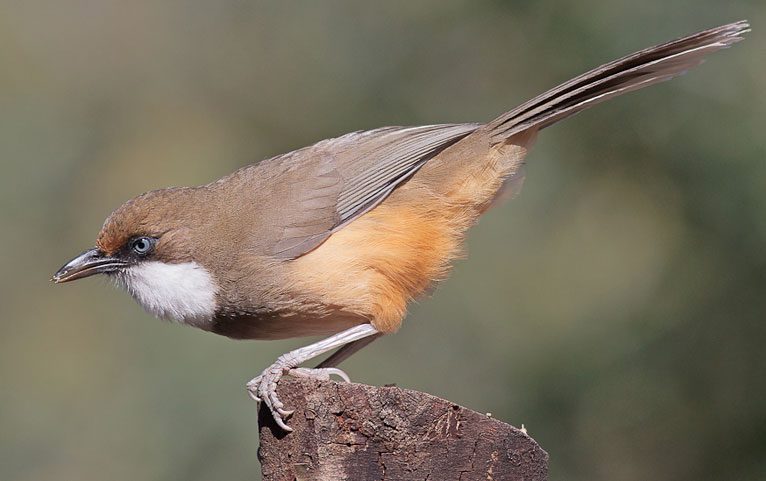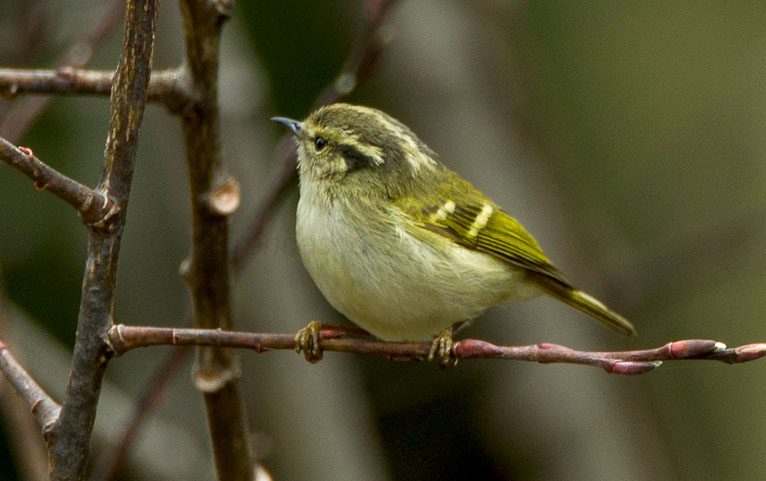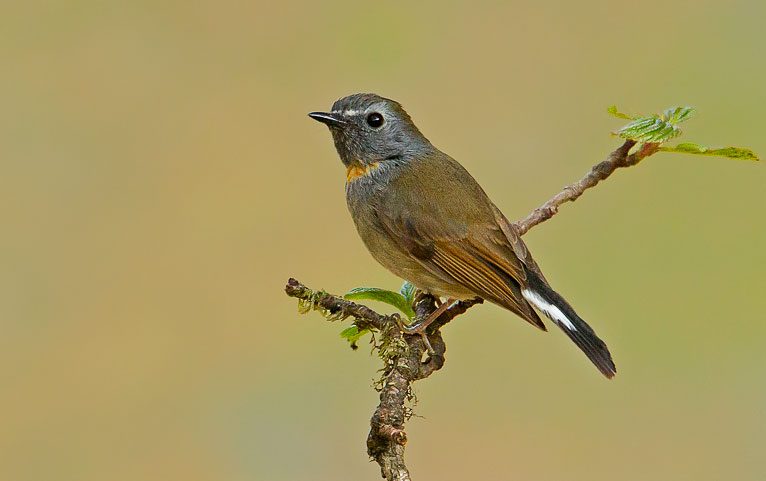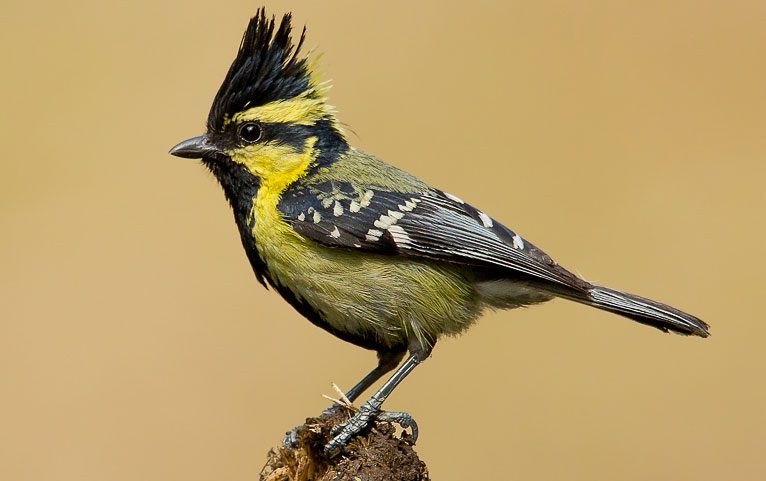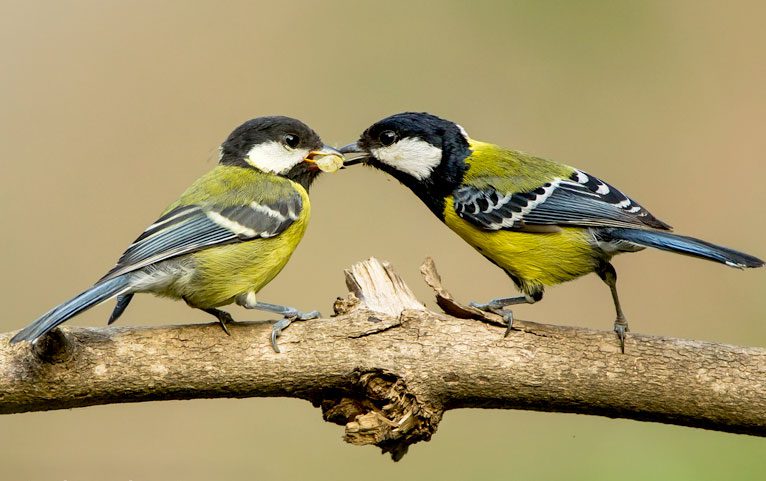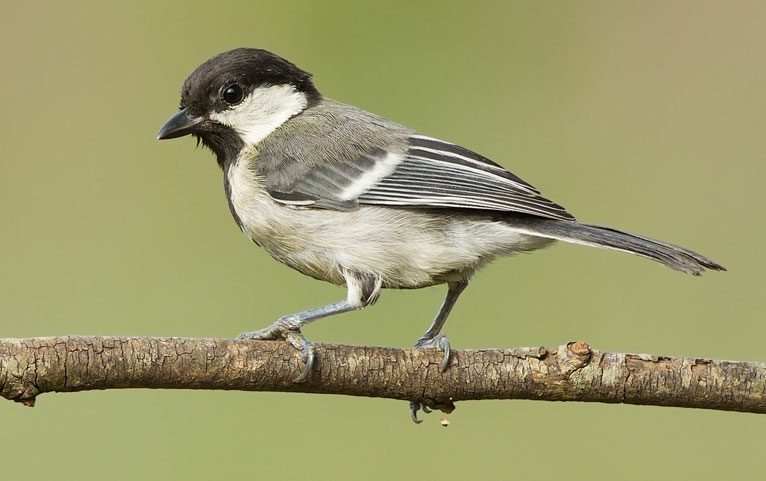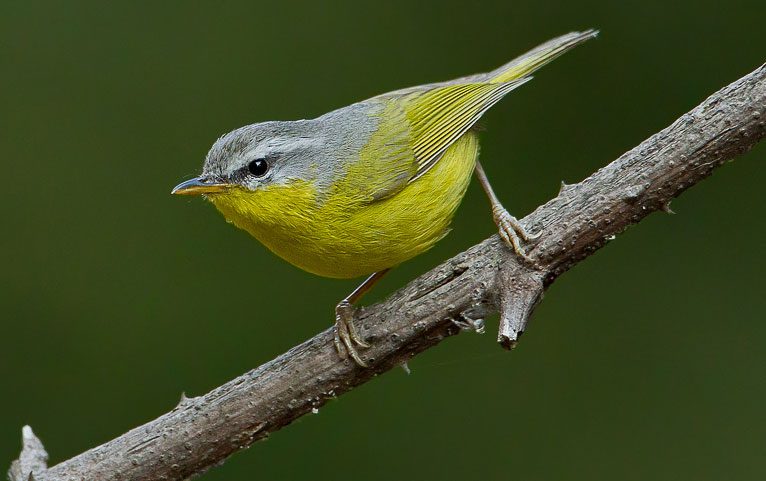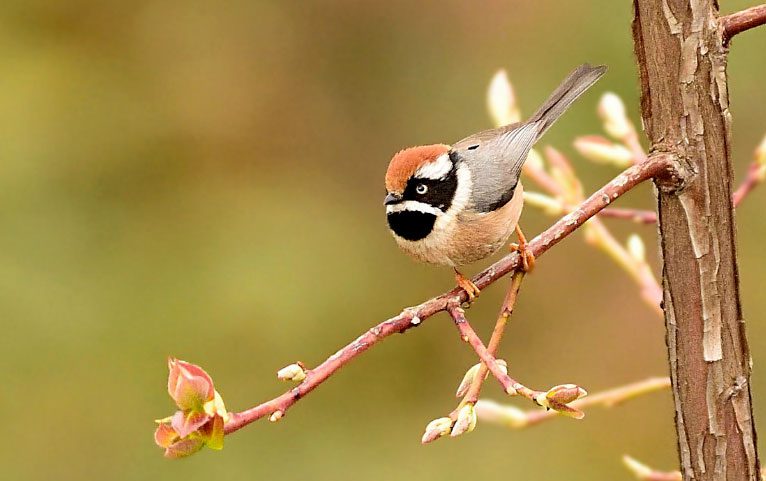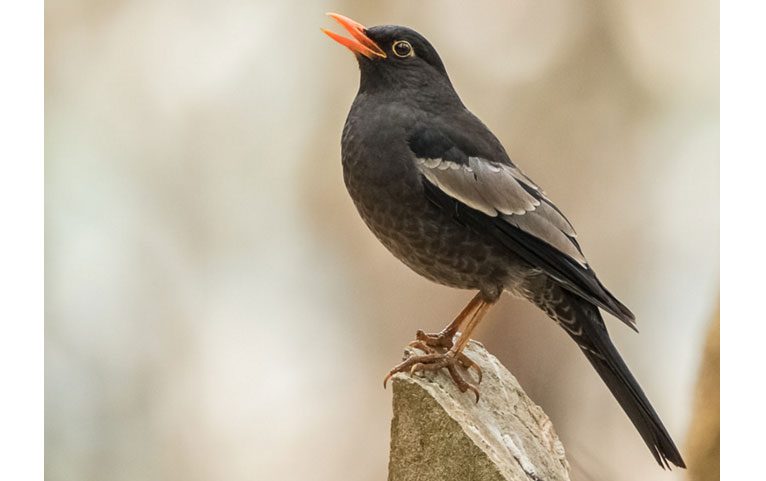Flying on Fumes: How Birds Meet Their Oxygen Demands at High Altitude
By Pat Leonard
Blue Whistling-Thrush by Imran Shah via Birdshare. February 23, 2017Mountain climbers know the feeling of trying to perform at elevation. Lungs ache for air and the heart races. Legs feel like lead and the brain gets cloudy. So just imagine how birds feel at high elevation as they go about their high-energy, high-exertion lifestyles.
Most living creatures are adapted to breathe easily under the column of air pressing down on us at sea level. But at higher elevations there’s less air around, so a lungful just doesn’t provide the same amount of oxygen to fuel their muscles.
On top of Mt. Everest, at 29,000 feet, a lungful of air provides less than one-third as much oxygen as at sea level. To understand how birds cope with that lack of oxygen, or hypoxia, Cornell Ph.D. student Sahas Barve turned to the steep Himalayan valleys of his native India.
Over five years, he studied the evolutionary solutions these avian mountaineers had come up with. He and his colleagues published their findings in December 2016 in the journal Proceedings of the Royal Society B. Though he was working in the world’s tallest mountain range, Barve’s study focused on moderate elevations (up to 10,500 feet), meaning his findings are applicable to mountain species around the world—especially as it warms.
“One of the most common predictions of climate change is that species are going to shift upslope to get out of warmer temperatures,” Barve explains. But while moving upward may sound like a straightforward way to avoid warming, it ignores the problem of thin air. “If hypoxia is a major hurdle and birds cannot make their oxygen transport any better than they already have,” Barve says, “then it might severely limit their ability to adapt and shift their ranges higher.”
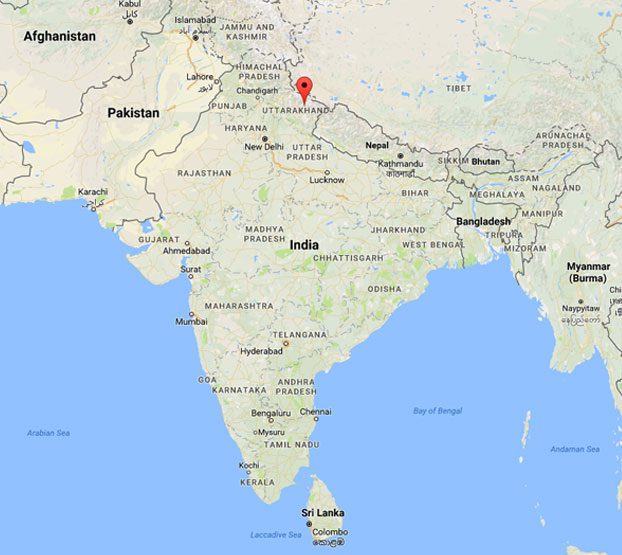
First, Barve and his hardy field assistants had to figure how the birds managed to compensate for thinner air. The researchers used mist nets to catch 15 species of birds at elevations ranging from 3,280–10,500 feet (1,000–3,200 meters). At these elevations, air has between 89 percent and 69 percent as much oxygen as at sea level.
They collected a drop of blood from each bird, allowing them to study the birds’ hemoglobin—the molecule in red blood cells that carries oxygen from the lungs to the muscles. The blood sample gave them two key measurements: the volume of the blood made up of red blood cells (hematocrit) and the hemoglobin concentration in the blood, measured using a handheld monitor.
The researchers tested resident species—ones that live at the same elevations year-round, such as the Green-backed Tit and Gray-winged Blackbird—and migrants, which breed at high elevations and spend winters lower down, including the Variegated Laughingthrush and the Blue-fronted Redstart. As it turned out, the two types of species solved the hypoxia problem in different ways.
Slideshow: Meet the 15 Species

The scientists studied 9 migrant species, including this Blue Whistling-Thrush, and 6 resident species. Photo by Aravind V via Birdshare. 
Himalayan Bluetails winter as low as 4,500 feet but move upslope to breed as high as 11,500 feet. Photo by Craig Brelsford/Macaulay Library. 
The study found that migrants cope with the lower oxygen at altitude by making extra red-blood cells. Blue-fronted Redstarts winter as low as 5,000 feet but their breeding grounds can be above 11,000 feet. Photo by Savlo Sanches via Birdshare. 
The migrants' approach works as a temporary fix for the breeding season, and allows them to reverse the change when they migrate back downslope. This Chestnut-crowned Laughingthrush breeds as high as 10,500 feet and then returns to sites as low as 4,000 feet for winter. Photo by Ritvik Singh/Macaulay Library. 
This Ultramarine Flycatcher breeds as high as 10,500 feet and then leaves the Himalayan region for winter. Photo by Ganesh Jayaraman via Birdshare. 
There's a catch to the migrants' approach. By making more blood cells, they run the risk of more sluggish bloodflow and possible clots. This Variegated Laughingthrush winters as low as 5,000 feet and moves as high as 11,500 feet to breed. Photo by Yeray Seminario/Macaulay Library. 
This White-throated Laughingthrush winters as low as 4,500 feet and breeds as high as 9,200 feet. Photo by Ganesh Jayaraman via Birdshare. 
Blyth's Leaf Warblers spend winters in distant regions and then migrate to the Himalaya, where they nest as high as 10,500 feet. Photo by Francesco Veronesl via Creative Commons. 
The Rufous-gorgeted Flycatcher also nests outside of the Himalaya, then arrives to breed at elevations up to 10,500 feet. Photo by Ganesh Jayaraman via Birdshare. 
The scientists also studied 6 resident species, which live year-round in the mountains. This is a Black-lored Tit, which lives between 1,500 and 6,600 feet. Photo by Ganesh Jayaraman via Birdshare. 
The resident species have evolved a way to cope with low oxygen without creating extra red blood cells. This Green-backed Tit lives between about 5,000 and 10,500 feet. Photo by Aravind V via Birdshare. 
Instead, the residents seem to put more oxygen-carrying hemoglobin molecules into their red blood cells. This Cinereous Tit lives at 1,500 to 5,000 feet. Photo by Aravind V via Birdshare. 
The residents' approach doesn't carry the risk of blood clots, giving them an advantage over the migrants in the long term. Grey-hooded Warblers live at 1,500 to about 8,300 feet. Photo by Ganesh Jayaraman via Birdshare. 
The Black-throated Bushtit breeds and winters between about 2,500 feet and 10,000 feet. Photo by Hardik Pala via Birdshare. 
The Grey-winged Blackbird lives between about 3,300 and 8,300 feet year-round. Photo by Ram via Birdshare.
“We found the migrant species respond to hypoxia just as most humans do when moving from sea level to higher elevations,” Barve says. “They do it by increasing their oxygen transport with a greater number of red blood cells.”
It sounds like a good idea, since creating more red blood cells means more hemoglobin, which can carry more oxygen. But the strategy has a downside: thicker blood and a higher risk of clots and blocked blood vessels. And it only works for a limited time.
“The amount of oxygen being delivered to the organs actually decreases because the blood is moving more slowly,” Barve says, “It’s like pumping tomato ketchup instead of blood. It’s actually a maladaptive trait to have”—in humans it’s a classic cause of an ailment known as chronic mountain sickness. “But it’s a response that the body has a lot of control over so that’s why it’s seen in a lot of organisms.”
Like a flatlander going on a ski vacation, the migrant species have apparently found a short-term solution that allows them to survive at high elevation for long enough to complete the nesting season. This quick fix also has the benefit of being reversible, allowing their blood composition to revert to normal when they return to lower elevations.
Meanwhile, Barve found the six resident species had all independently evolved a different technique to increase their oxygen uptake, one that doesn’t come with a time limit.
“The resident birds do not increase the number of red blood cells,” Barve explains. “Instead, they increase the amount of hemoglobin inside each cell.” In essence they make more oxygen-carrying hemoglobin without having to also build all the other parts of a red blood cell. “So they avoid all the bad things that can happen because of thicker blood.”
In other parts of the world, a few other ways to cope with thin air have evolved. Hummingbirds in the Andes can increase the oxygen-carrying ability of individual hemoglobin molecules. Due to the remoteness of his study sites, Barve wasn’t able to test for this in Himalayan birds. People native to the Tibetan plateau use yet another approach, taking more breaths per minute and loading their blood with nitric oxide, a substance that keeps their blood vessels dilated and increases bloodflow. And in the Ethiopian highlands, native people somehow breathe easily above 11,000 feet, but researchers still aren’t sure how they do it.
As for the future, Barve says his research shows that for species that live on mountainsides, coping with climate change might not be as easy as just moving upslope.
“I don’t think we give hypoxia the attention it deserves,” says Barve. “A lot of species around the world live at high elevations and we don’t know how it affects species distribution in the present, let alone in the future.”
Reference
Barve, S., A.A. Dhondt, V.B. Mathur, F. Ishtiaq, and Z.A. Cheviron. 2016. Life history characteristics influence physiological strategies to cope with hypoxia in Himalayan birds. Proceedings of the Royal Society B. November 2016.

All About Birds
is a free resource
Available for everyone,
funded by donors like you
American Kestrel by Blair Dudeck / Macaulay Library
